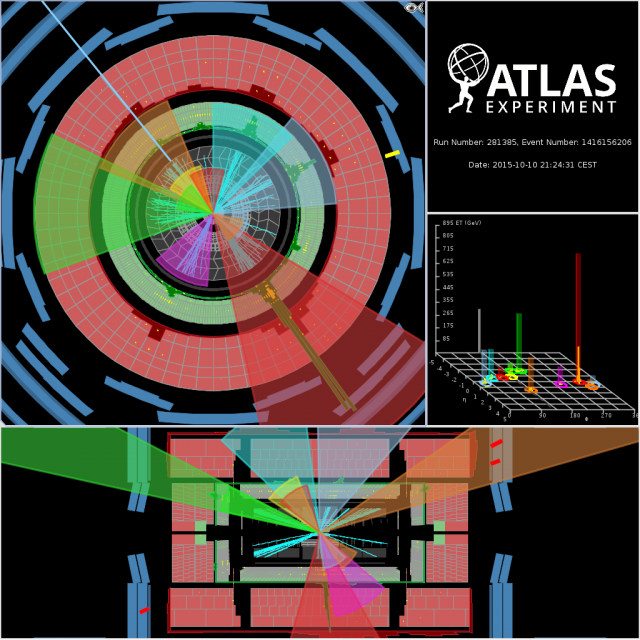University of Oxford graduate students have led the first paper for Supersymmetry using the full 2015 data-set from the ATLAS experiment at the CERN Large Hadron Collider, with the whole Oxford SUSY group working together to complete it in record time.
This is the first search for supersymmetry anywhere in the world to use data collected with the higher center-of-mass energy of 13 TeV. The increase in energy has allowed the analysis team to explore further than ever before, and they have put the tightest constraints on the existence of these new particles yet.
The newly available paper seeks a particle called the gluino, which is one of the first that would be expected to be seen at the LHC. The search targets final states with the highest jet multiplicity of any search at the LHC. “In some models, gluinos produced inside ATLAS can decay to as many as 12 distinct jets of particles. This is very rare in the Standard Model,” says Will Kalderon. “At the end of the gluino’s long decay chain a neutral and weakly interacting particle could be produced, which is an ideal candidate for the elusive dark matter.” The search follows in the footsteps of previous Oxford students, and uses a novel background determination technique.
Many of the Oxford team were heavily involved in the analysis, including Will Kalderon, Will Fawcett, Dr Koichi Nagai, Jonathan Burr, Dr Claire Gwenlan and Prof Alan Barr. There were a lot of tight deadlines to meet to be the first, and it’s a credit to the team to have achieved this.

